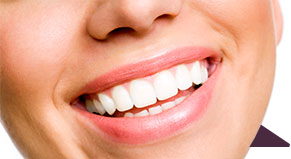Best Sugar Alternatives and Sweeteners for Your Teeth
October 15th, 2015
 Just because you have a particularly hungry sweet tooth doesn’t mean you're doomed to have cavities. There are a handful of sugar and sweetener alternatives out there that aren’t bad for your teeth. In fact, some of these sweet substitutes have actually been found to be good for your teeth. We’re here to let you know which sugar alternatives and sweeteners are best for your teeth.
Just because you have a particularly hungry sweet tooth doesn’t mean you're doomed to have cavities. There are a handful of sugar and sweetener alternatives out there that aren’t bad for your teeth. In fact, some of these sweet substitutes have actually been found to be good for your teeth. We’re here to let you know which sugar alternatives and sweeteners are best for your teeth.
Why Is Sugar So Bad for Your Teeth?
Surprising to many, it’s not actually sugar that is your teeth’s enemy. Rather, it’s the bacteria that turn sugar into enamel-eating acids. Sugar is extremely easy for bacteria to break down into acid, which is why dentists want you to avoid eating a lot of sugary food, candy and drinks. When the sugar is broken down into acids, the acids break down your enamel, causing cavities, dental decay, and eventually, an unhappy trip to the dentist.
Best Sugar and Sweetener Choices to Keep Your Teeth Healthy
Unlike sugar, sugar alternatives aren’t as easy for bacteria to break down into acids. A group of sweeteners known as polyols actually have antibacterial properties, according to The New York Times, making them the best possible sugar and sweetener alternatives for your teeth. If sweeteners are antibacterial, they cannot be broken down by bacteria in your mouth and won't cause cavities.
So what are these polyols? Polyols are sugar alcohols that come from a chemical process. Not only are they great for your teeth, but they also contain fewer calories than sugar. Common polyols include xylitol, sorbitol, malitol, and isomalt. Since these sugar substitutes won’t cause cavities, they are often used in gum. In fact, a 1998 article from The British Dental Journal found that chewing gum containing sugar sweetener alternatives, like sorbitol and xylitol, actually helped to prevent cavities due to increased saliva flow.
Are Polyols Healthy for You in Other Ways?
So now that you know that polyols such as xylitol, sorbitol, malitol, and isomalt are good for your teeth, you’re probably wondering if they’re safe for the rest of your body too. According to the Calorie Control Council, the U.S. Food and Drug Administration has recognized some polyols as Generally Recognized as Safe (GRAS) and others have been approved as food additives. An Expert Committee of the World Health Organization has concluded that polyols are safe for human consumption after careful review.
For very sensitive people, polyols have been found to cause gastrointestinal problems, such as gas or laxative effects, but these issues aren’t permanent. Polyols have been used for many years by people all over the world. They are pretty well documented as being a safe and effective sugar and sweetener alternative.
You don’t have to sacrifice delicious sweets in order to keep your teeth healthy. Polyols taste just as delicious as sugar without the harmful tooth decaying effects! If you have any more questions about the best sugar and sweetener alternatives for your teeth, you should reach out to us on Facebook!

 Constant tooth pain is irritating, and can be downright debilitating if it hurts enough. If you experience regular bottom teeth pain, the first thing you should do is visit your dentist so that whatever is wrong doesn’t get worse. But it doesn’t hurt to learn what might be causing your bottom teeth to hurt in the meantime. Here are 5 reasons why your bottom teeth may hurt.
Constant tooth pain is irritating, and can be downright debilitating if it hurts enough. If you experience regular bottom teeth pain, the first thing you should do is visit your dentist so that whatever is wrong doesn’t get worse. But it doesn’t hurt to learn what might be causing your bottom teeth to hurt in the meantime. Here are 5 reasons why your bottom teeth may hurt. From putting on caps to placing dental veneers, dentists do a lot of interesting things to keep your teeth in tip-top shape. If you live your daily life outside of the dental world, you might find all of the stuff we do to be a bit confusing. We’re here to break down some of the most popular cosmetic dental treatments we offer at Water Tower Dental Care to help you better understand which procedures can best help your smile. Here’s the difference between caps, crowns, veneers, onlays, inlays and fillings.
From putting on caps to placing dental veneers, dentists do a lot of interesting things to keep your teeth in tip-top shape. If you live your daily life outside of the dental world, you might find all of the stuff we do to be a bit confusing. We’re here to break down some of the most popular cosmetic dental treatments we offer at Water Tower Dental Care to help you better understand which procedures can best help your smile. Here’s the difference between caps, crowns, veneers, onlays, inlays and fillings.
 Cavities are a major concern of any mouth, but it can be hard to know if you have one or not without a trip to the dentist. Luckily there are plenty of signs and symptoms that can help indicate that you might have a cavity in your mouth.
Cavities are a major concern of any mouth, but it can be hard to know if you have one or not without a trip to the dentist. Luckily there are plenty of signs and symptoms that can help indicate that you might have a cavity in your mouth.




 Website Powered by Sesame 24-7™
Website Powered by Sesame 24-7™